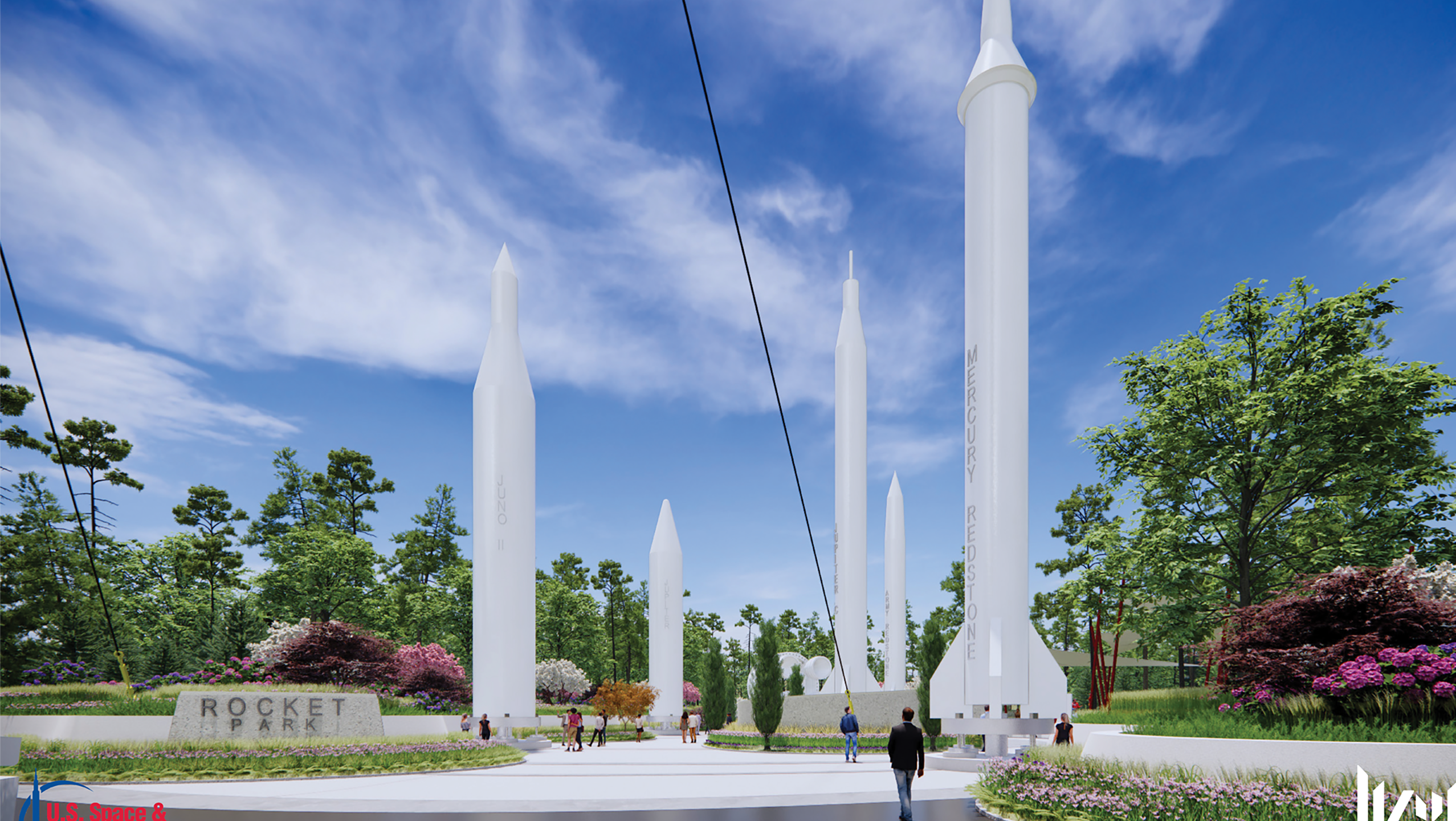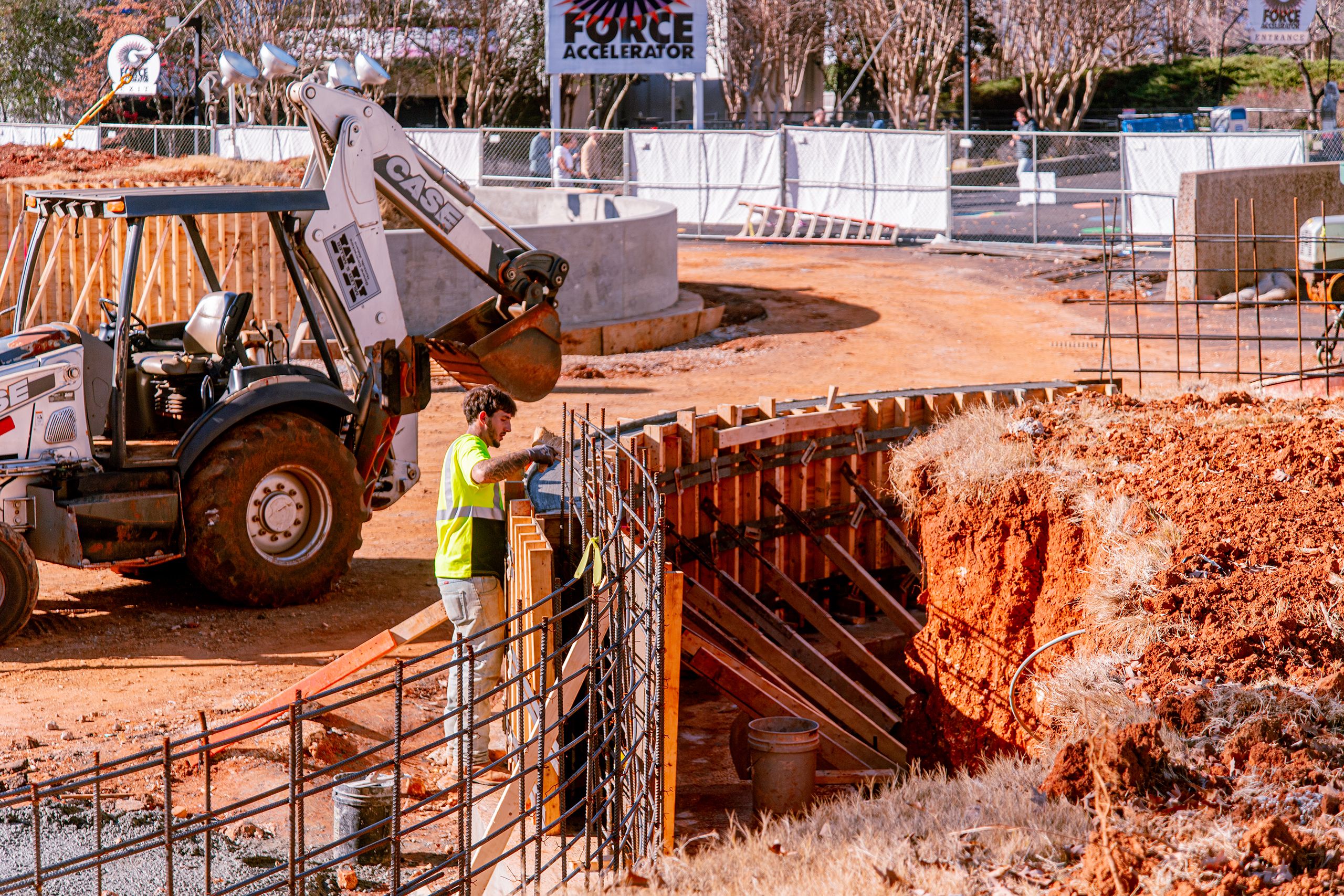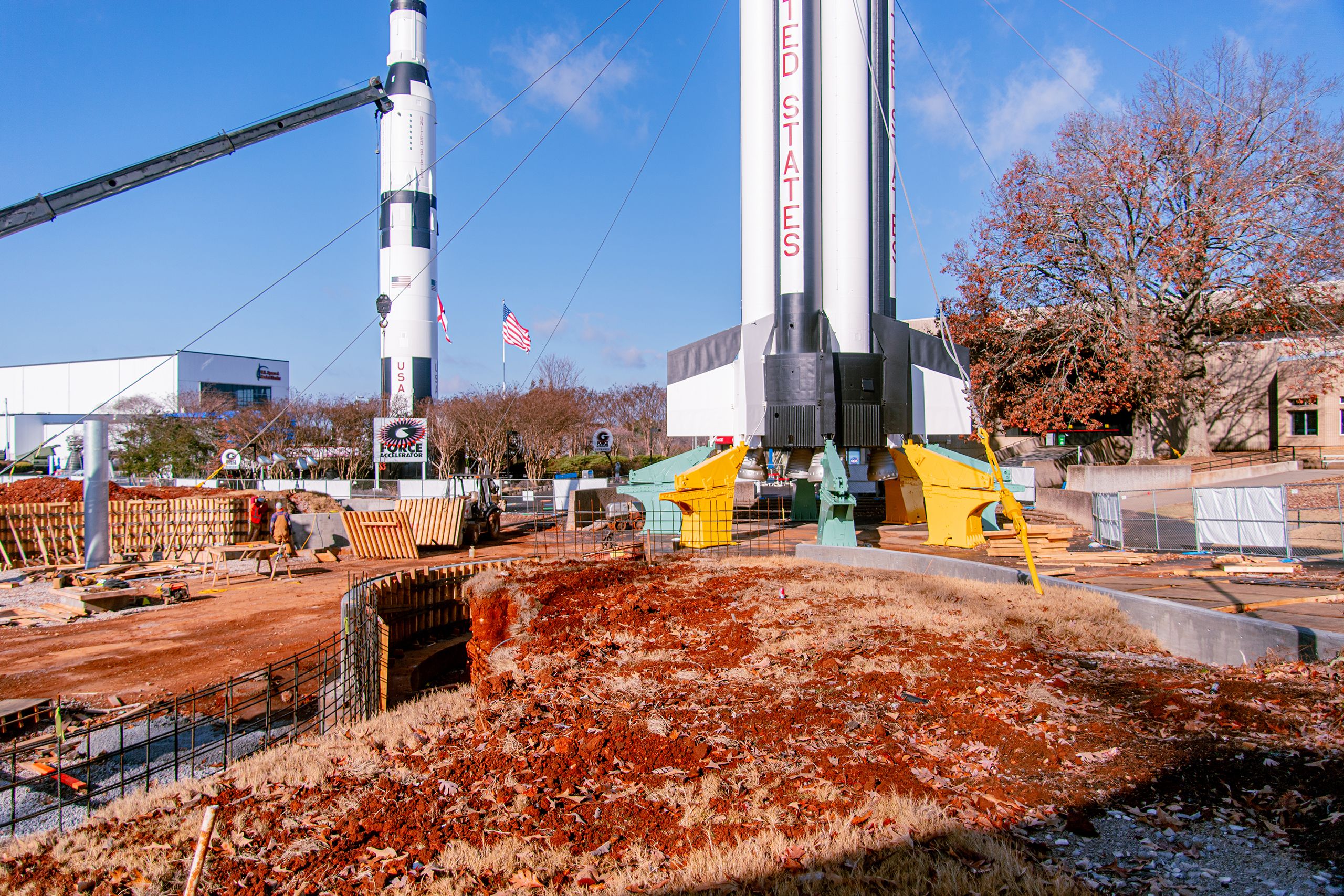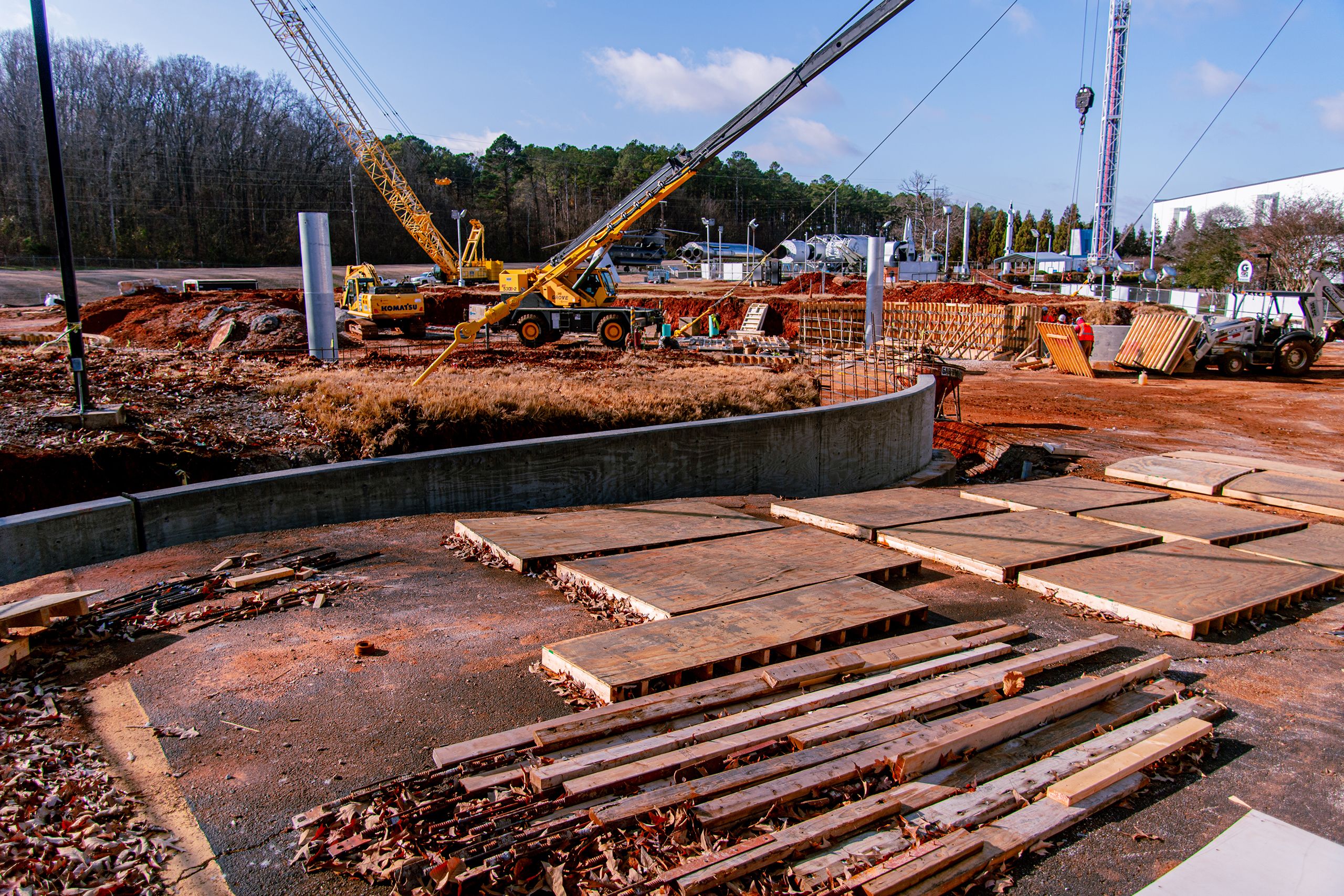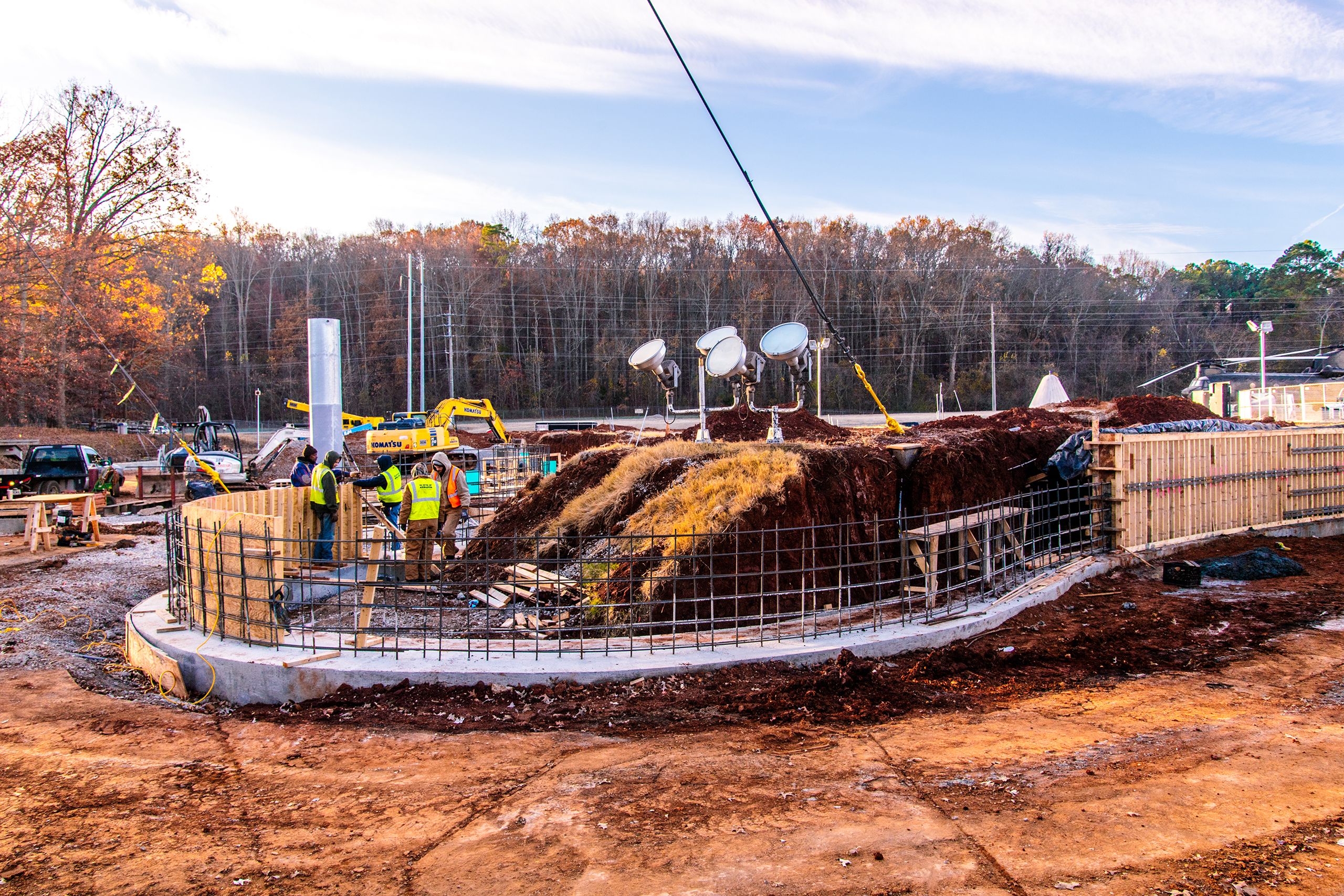Ways to Give

Donate
It’s easy to support the Capital Campaign with a one-time or monthly gift by credit card.

Pathfinder Puzzle
Become a part of history through the Space Shuttle Pathfinder Puzzle program.

Spaceline Supporters
Claim your spot in Rocket Part by naming a support beam for one of the 5 historic rockets.

Take a Seat
Add your name or the name of a loved one to a bench or auditorium chair with the Take a Seat program.
Rocket Park
The reimagined Rocket Park will feature native plantings, trees, and lush grassy areas surrounding more than 65 years of space exploration vehicles including Jupiter, Jupiter-C, Juno II, Army Redstone, Mercury Redstone, and a brand new addition, a section of the powerful Space Launch System that is returning us to the moon. The impressive new park also boasts an outdoor amphitheater and a stunning memorial to the men and women of NASA’s Marshall Space Flight Center.
Fun Facts
Mercury Redstone
- Our Mercury Redstone is from the MR-1 flight. These launch vehicles normally crash into the ocean after the capsule separated from it. MR-1, a test flight with no astronaut on board, had an electrical short that caused the rocket to shut off when it was only 4 inches (10 centimeters) off the launch pad. It settled back into place and triggered the launch escape system.
- The Mercury Redstone evolved from the U. S. Army PGM-11 Redstone Missile. Known as Old Reliable, the Redstone was ideal to convert into a human spaceflight vehicle thanks to its record of safety and reliability.
- The Mercury-Redstone launch vehicle could not put astronauts into orbit but could launch them to an altitude of over 100 miles (160 kilometers).
Juno I/Jupiter C
- The Juno I and Jupiter C launch vehicles are both variations of the U. S. Army Redstone Missile designed to launch satellites. Outwardly, the Juno I and Jupiter C are identical, with only one additional solid rocket motor in the payload section of the rocket making the difference.
- The Juno I launched the first U. S. satellite on January 31, 1958, called Explorer I. The last Explorer 11, the last to carry the Explorer name, launched in 1961, but the Explorer program is ongoing as of 2024.
- The barrel on top of the Jupiter C rocket rotated at 750 revolutions per minute to spin-stabilize the satellite once in space, like a top.
Jupiter
- The PGM-19 Jupiter missile was a medium range ballistic missile originally designed by the U. S. Army at Redstone Arsenal. The program was later turned over to the U. S. Air Force who deployed it throughout the United States, Italy, and Turkey.
- In addition to being used as a nuclear weapon, the Jupiter missile also launched primate flights. Able and Baker, two monkeys, were launched and successfully recovered on May 28, 1959 on the AM-18 Jupiter missile.
- The development of the Jupiter missile was originally a joint project between the U. S. Army and the Navy. The Navy left the project in 1956.
Juno II
- The Juno II was a four-stage satellite launch vehicle based directly on the design of the PGM-19 Jupiter nuclear missile. The first stage was a Jupiter missile body, with three sets of solid rocket motors making up the second, third, and fourth stages in a similar arrangement to the Juno I that launched the Explorer I satellite.
- The Juno II only launched 10 times between 1958 and 1961.
- The first success American lunar flyby mission, Pioneer 4, was launched on a Juno II in 1959.
Army Redstone
- Our Redstone missile is the first production missile from the Chrysler Corporation assembly line in Warren, Michigan. It was used to train soldiers on the systems and processes needed to deploy the missile in the field. Many of its internal components are labeled “For Training Use Only”.
- The missile’s official name was PGM-11 Redstone but was also known as “Old Reliable” because of its reputation for accuracy and extremely low failure rate during testing.
- The U. S. Army Redstone was the “father” of several rockets. The Juno I, Jupiter C, Mercury Redstone, Jupiter, and Juno II launch vehicles and even the Saturn I were developed from the Redstone and provided many firsts in the early American space program.
Virtual Preview of Rocket Park
The rockets will return to a much greener and visitor-friend park.
Thank You to Our Donors
Email us if you have a correction to this list.
$1,000,000 and above
Fred B. Luddy Foundation
$100,000-$499,000
Matt Sheehy
Contact us to learn how you can help support the growth of Space Camp and the U.S. Space & Rocket Center.

Brenda Carr
Executive Director

Emily Pietrzyk
Assistant Director of
Donor & Alumni Relations
Donor & Alumni Relations
